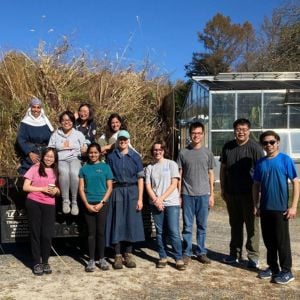“We’re all called to be great saints. Don’t miss the opportunity!”
—Mother Angelica, Foundress of EWTN
One of the aspects that I really appreciate from the Second Vatican Council (1962–1965) is the explicit teaching of the universal call to holiness, the exhortation that everyone responds to the graces of God and lives lives worthy of the Christian name. One reason I regard the universal call to holiness with such zeal is something known as clericalism.
 While I believe that no one can replace the institution of ordained ministry—Christ Himself willed that certain men be set aside for this illustrious life—this isn’t absolutely everything that the Church is about. In my native country of the Philippines, if a young man were to love the Mass and practice other Catholic devotions consistently, it is almost certain that people will implicitly or explicitly label him as the “future priest.” The young man will be endlessly asked, “Magpapari ka ba?” (Are you going to become a priest?). Although there is nothing wrong with this question, the assumption that holiness and devotion equate to the ministerial priesthood can lose sight of the call we all share to pursue holiness, no matter our vocation.
While I believe that no one can replace the institution of ordained ministry—Christ Himself willed that certain men be set aside for this illustrious life—this isn’t absolutely everything that the Church is about. In my native country of the Philippines, if a young man were to love the Mass and practice other Catholic devotions consistently, it is almost certain that people will implicitly or explicitly label him as the “future priest.” The young man will be endlessly asked, “Magpapari ka ba?” (Are you going to become a priest?). Although there is nothing wrong with this question, the assumption that holiness and devotion equate to the ministerial priesthood can lose sight of the call we all share to pursue holiness, no matter our vocation.
At the end of October, a group of lay Catholics from Saint Thomas More visited an abbey of Benedictine contemplative nuns, which reminded me of this universal call. Located in Bethlehem, Connecticut, the Abbey of Regina Laudis was a solace for my soul!
We started our Saturday early, at least by students’ standards. I woke up at 6:30 AM and was at STM by 8:15 AM. Kashmiri Schmookler M.A.R. '24, a fellow STM intern, organized the day for us. She drove our STM van to Bethlehem, about one hour away from campus.
Before we even arrived to the Abbey, endless trees in their autumn colors greeted us for miles and miles as we drove.
At the Abbey, the group met Mother Maria Evangelista Fernandez, OSB M.A.R. '24, a Benedictine nun who calls Regina Laudis home and often attends Mass at STM when she is on campus for class. Mother Maria showed us parts of the Abbey, including a chapel, and we began gardening work immediately.
Needless to say, I got the most exercise I have gotten in months! In preparation for both winter and the upcoming spring, my peers and I cleared weeds from a patch of land using gardening tools and wheelbarrows. After dumping the weeds on a pickup truck named Fred, we drove off to an area of the Abbey where the weeds were dropped. As we worked, I kept in mind Mother Maria’s advice to us: “We can talk while working, but be mindful of the task.”
After gardening, Mother Maria led us to the Chapel of Our Lady Queen of Praise to experience a nuns’ prayer life. At Regina Laudis, they chant the full Liturgy of the Hours, which is the universal prayer of the Church and an ancient practice for both clergy and lay people alike. They chanted midday prayer, or sext, in Latin. At the Abbey, the nuns experience both seclusion and integration with the wider world. In their chapels, for example, a certain space is reserved for the nuns and their community alone. And yet, unity of mind and heart permeated. While the nuns chanted, we let the prayer wash over us and followed their lead, sitting, standing, and bowing our heads when they would. Unity of mind and heart constitutes active participation, not just exterior gestures. The universal call to holiness was on full display in their devotion not only to their gardening, but also to their prayer.
Filled with food for the soul, we were ready to eat! Expert gardeners and farmers, the nuns cooked a delicious meal for us using the fruit of their land. Our lunch consisted of salad, lasagna, apple cobbler, fresh milk, and tea made at the Abbey. We were satiated and grateful after the nutritious homemade meal.
After lunch, Mother Maria showed us more of the Abbey’s land. We walked to a cemetery and I prayed for the deceased nuns buried there. Surrounded by the autumn leaves at the cemetery, I recognized the short time we have here on this earth. Life blooms for a time, and then transitions to the next season.
Lastly, Mother Maria brought us to the main church of the Abbey, named the Abbey Church of Jesu Fili Mariae. As we gathered in the beautiful church, Mother Maria led us in an Examen, a Jesuit prayer that contemplates blessings throughout the day.
The Lord’s blessings were found in countless ways that day: the autumn leaves, the nuns and their warmth, the sense of unity with creation through working the land, the participation in Church tradition by chanting midday prayer, and the generous nuns’ cooking. I’m grateful that we witnessed the universal call to holiness through the nuns’ life. Their example continues to inspire us to seek out holiness wherever we are and in whatever we are doing.



